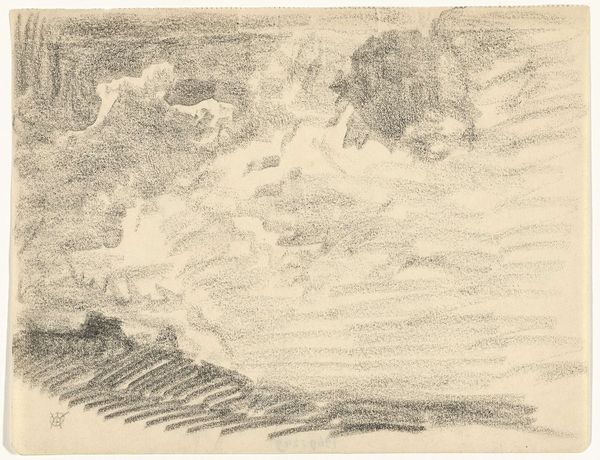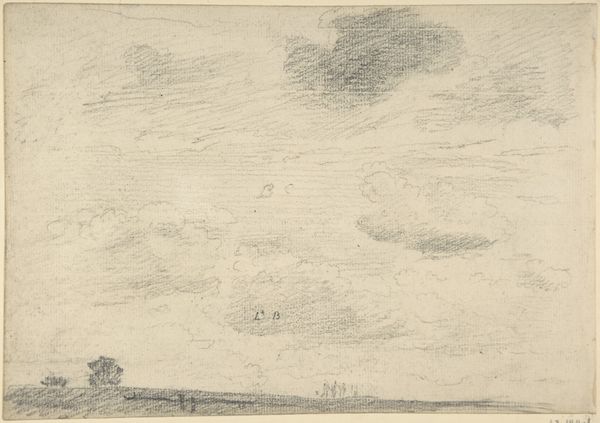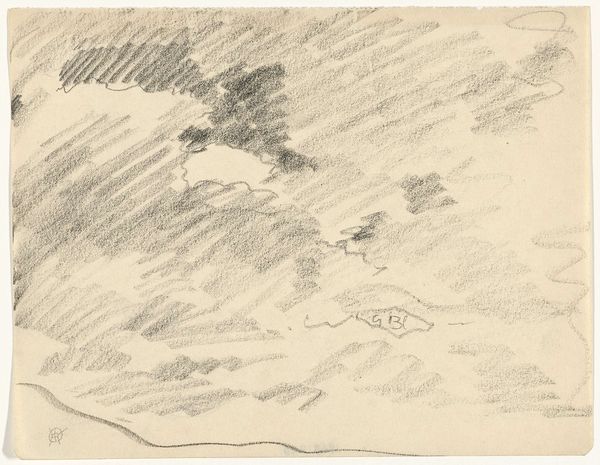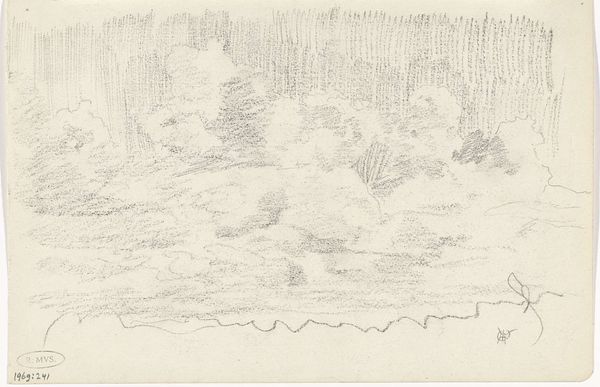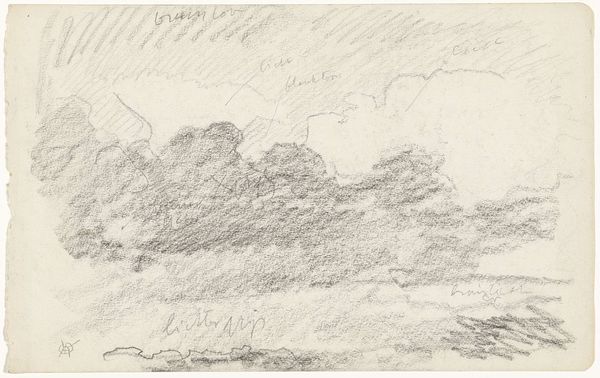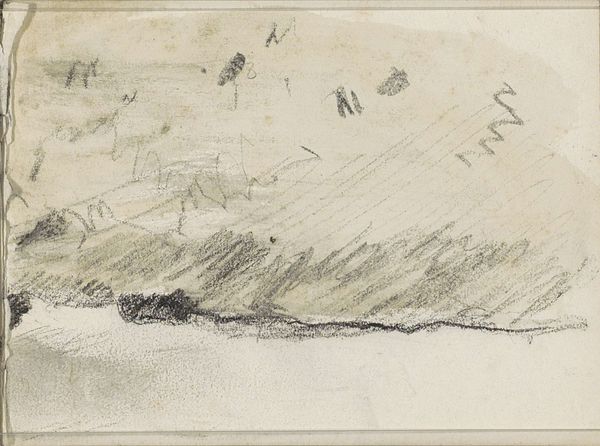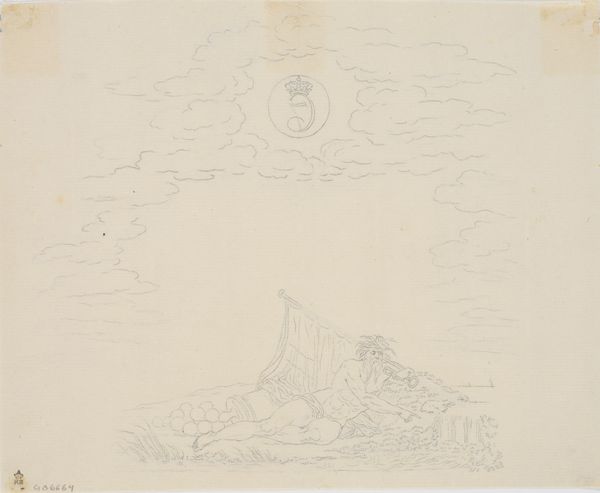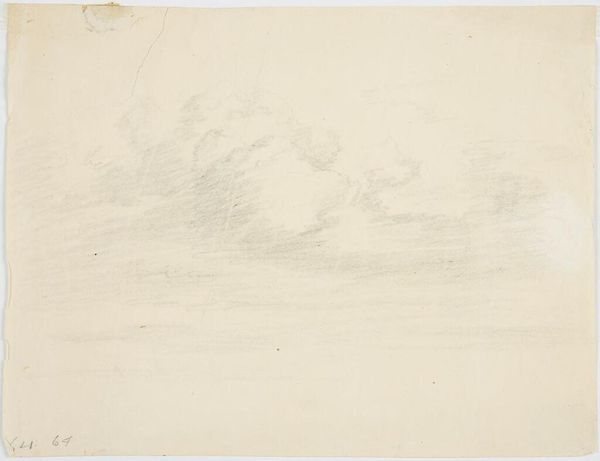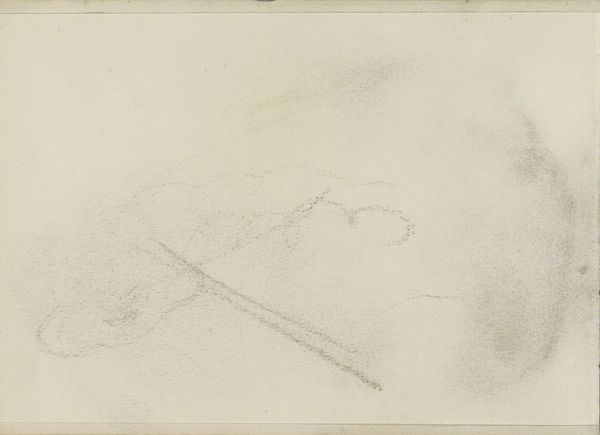
drawing, plein-air, paper, pencil
#
drawing
#
impressionism
#
plein-air
#
pencil sketch
#
landscape
#
paper
#
pencil
Dimensions: height 113 mm, width 183 mm
Copyright: Rijks Museum: Open Domain
Editor: This is "Studie van een wolkenlucht," or "Study of a Cloudy Sky," made by Willem Roelofs sometime between 1832 and 1897. It's a pencil sketch on paper, currently held in the Rijksmuseum. I’m struck by the artist's use of a readily available, humble material to capture something so ephemeral. What aspects of this work do you find most compelling? Curator: I'm drawn to Roelofs' evident attention to the *process* of capturing the sky. He isn't trying to create an illusion. The visible pencil strokes remind us of the labor involved – the artist observing, translating, and the physical act of drawing. The paper, a mass-produced material, becomes the ground for this intimate interaction between artist, subject, and tool. It makes one wonder about the accessibility of art production at that time. Editor: So you’re less focused on the clouds themselves, and more on *how* they're rendered and the materials used? Curator: Precisely. The materials and process are inseparable from the meaning. Roelofs isn't just depicting a sky; he's engaging in a dialogue with nature through the most direct means available to him. The sketch aesthetic highlights the everyday quality of artistic creation, doesn't it? Consider how this accessibility contrasts with, say, oil paintings of the same period, which demanded much more specialized tools, training and were less transportable. Editor: That’s a really interesting way to think about it. It democratizes the art-making, to a certain extent. I hadn't considered the social implications of choosing pencil and paper. Curator: Exactly! It moves the focus from artistic genius to the immediate, material engagement with the environment, connecting art with everyday labor and experience. Editor: That definitely gives me a new appreciation for Roelofs' choice of materials and how it informs the meaning of the artwork itself. Curator: Indeed! Considering the material realities helps us move beyond aesthetic appreciation toward understanding the social and economic context of art production.
Comments
No comments
Be the first to comment and join the conversation on the ultimate creative platform.
